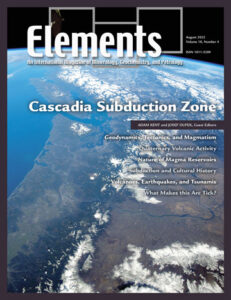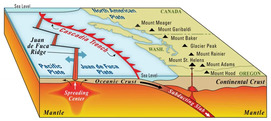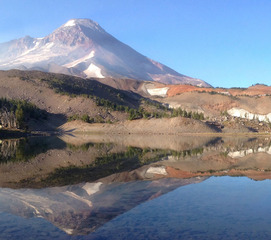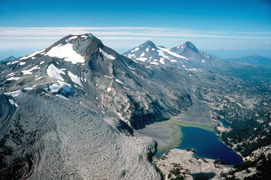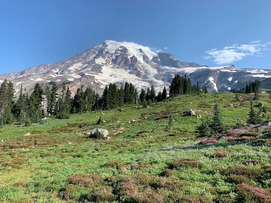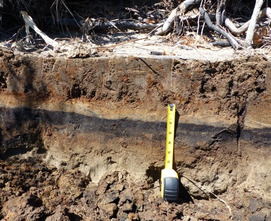Cascadia Subduction Zone
Adam Kent and Josef Dufek – Guest Editors
Table of Contents
The canonical Cascadia subduction zone runs along the west coast of North America from Canada to northern California. The issue will emphasize the region as a historically important location for the development of ideas in subduction zone science, a place for understanding the compound hazards of a subduction zone in a populous region, and as a location where science is now moving beyond the traditional disciplinary confines to embrace multidisciplinary and transdisciplinary approaches. The Cascadia subduction zone is a natural laboratory for exploring ideas related to evolving subduction zone geometry and seismicity, melt transport, and the controls on eruptions. This issue will describe our current understanding of the combined tectonic and magmatic systems in this important subduction system.
- Cascadia Zone: Subduction and People
- Tectonics and Geodynamics of the Cascadia Subduction Zone
- Quaternary Volcanism in the Cascade Arc
- The Nature of Active Magma Reservoirs and Storage Underneath Cascade Volcanoes
- The Role of Subduction Zone Processes in the Cultural History of the Cascade Region
- Volcano, Earthquake, and Tsunami Hazards of the Cascadia Subduction Zone
v18n5 Cement and Concrete: From the Romans to Mars
GUEST EDITORS: Luca Valentini (University of Padua, Italy), Maarten Broekmans (Geological Survey of Norway, Norway), Jan Elsen (KU Leuven, Belgium), and Ruben Snellings (VITO, Belgium; KU Leuven, Belgium)
Portland cement represents an essential commodity in a developing and fast urbanizing world. However, the downside of its popularity is a massive ecological footprint, in terms of global warming potential and consumption of mineral and water resources. Therefore, the development of sustainable alternatives to ordinary Portland cement constitutes a fundamental technological and societal challenge. In this context, mineralogy and geochemistry play an important role in assessing primary and secondary resources for a new generation of cement and concrete that has a reduced ecological footprint, drawing from the knowledge of both ancient and modern binders. Mineralogical and geochemical tools are also essential for establishing a link between the basic physical and chemical processes that occur during production, hardening, service life, and degradation of concrete.
- Cement and Concrete—Past, Present, and Future Herbert Pöllman (Martin Luther University Halle-Wittenberg, Germany), Ruben Snellings (VITO, Belgium; KU Leuven, Belgium), and Luca Valentini (University of Padua, Italy)
- Historic Concrete Science: Opus Caementicium to “Natural Cements” Jan Elsen (KU Leuven, Belgium), Marie D. Jackson (University of Utah, USA), and Encarnación Ruiz-Agudo (University of Granada, Spain)
- The Rise of Portland Cements Karen L. Scrivener (EPFL, Switzerland) and Ruben Snellings (VITO, Belgium; KU Leuven, Belgium)
- Alternative Non-Portland Binders Theodore Hanein (University of Sheffield, UK), Angeles G. De la Torre (University of Malaga, Spain), Zuhua Zhang (Hunan University, China), and John L. Provis (University of Sheffield, UK)
- Polarization-fluorescence Microscopy in the Study of Aggregates and Concrete Maarten A.T.M. Broekmans (Geological Survey of Norway, Norway), Isabel Fernandes (University of Lisbon, Portugal), Ola Fredin (Norwegian University of Science and Technology, Norway), and Annina Margreth (Geological Survey of Norway, Norway)
- Sustainable Sourcing of Raw Materials for Construction: From the Earth to the Moon and Beyond Luca Valentini (University of Padua, Italy), Kathryn R. Moore (University of Exeter, UK), and Mark Bediako (BRRI-CSIR, Ghana)
- Halogens: From Planetary Surfaces to Interiors (February 2022)
- Organic Biomarkers (April 2022)
- Water in Planetary Bodies (June 2022)
- Cascadia Subduction Zone (August 2022)
- Cement and Concrete: From the Romans to Mars (October 2022)
- Exploring Jupiter’s Moon Io (December 2022)



